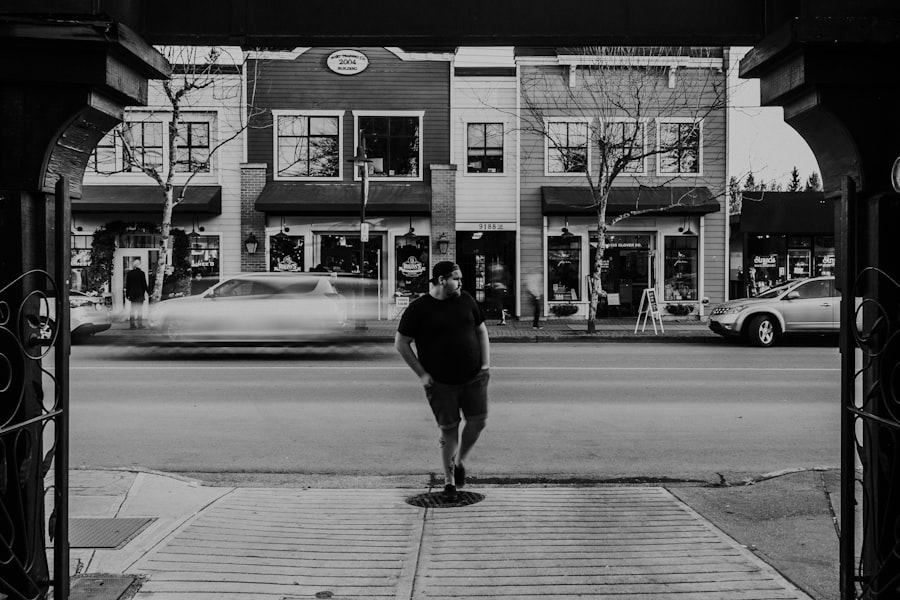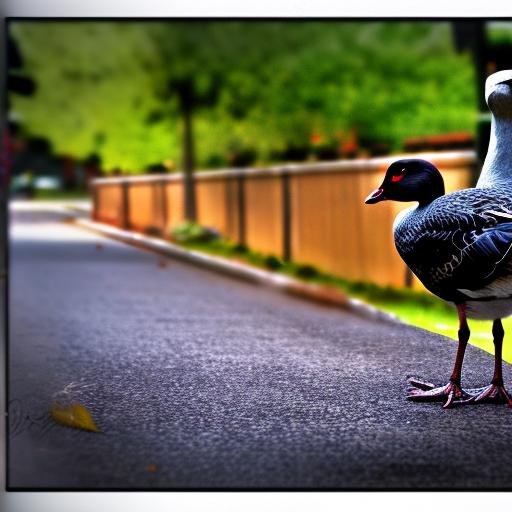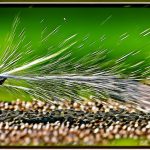Geese on sidewalks have become a common problem in many urban areas. These large birds can be a nuisance and pose risks to pedestrians. Finding a solution that is both humane and effective is crucial in addressing this issue. In this article, we will explore the reasons why geese are attracted to sidewalks, the dangers they pose to pedestrians, the legal implications of geese on public property, and various methods for deterring geese from using sidewalks.
Key Takeaways
- Geese on sidewalks pose a serious danger to pedestrians.
- Geese are attracted to sidewalks because of the availability of food and water.
- Legal implications of geese on public sidewalks must be considered.
- Non-lethal methods such as physical barriers and scare tactics can be used to keep geese off sidewalks.
- Regular maintenance and educating the public are important in preventing geese from nesting on sidewalks.
Why Geese are Attracted to Sidewalks
There are several reasons why geese are drawn to sidewalks. One of the main factors is the availability of food. Sidewalks often provide easy access to grassy areas where geese can graze. Additionally, sidewalks are typically located near water sources such as ponds or lakes, which are attractive to geese for drinking and bathing.
The proximity of sidewalks to water sources also plays a role in attracting geese. Geese prefer to be near water as it provides them with a sense of safety and security. Sidewalks that are close to bodies of water become convenient resting spots for geese during their migration or daily activities.
The Dangers of Geese on Sidewalks for Pedestrians
Geese on sidewalks can pose risks to pedestrians. One of the main concerns is aggressive behavior. Geese are known to be territorial and may become aggressive if they feel threatened or if they perceive someone as a potential threat to their nests or goslings. This aggression can lead to bites or attacks, especially if pedestrians get too close to the birds.
Another danger that geese on sidewalks present is their fecal matter. Geese produce a significant amount of waste, and their droppings can create slippery surfaces on sidewalks, increasing the risk of falls and injuries for pedestrians. The fecal matter also poses health risks as it may contain bacteria that can cause illnesses if it comes into contact with humans.
Legal Implications of Geese on Public Sidewalks
The presence of geese on public sidewalks raises legal concerns. Laws and regulations vary depending on the jurisdiction, but many places have rules in place to protect wildlife and ensure public safety. It is important for individuals and organizations to be aware of these laws and comply with them.
Failure to comply with regulations regarding geese on public property can result in consequences. This may include fines or legal action against individuals or organizations that do not take appropriate measures to deter geese from using sidewalks. It is essential to understand the legal implications and take proactive steps to address the issue.
Non-Lethal Methods for Keeping Geese off Sidewalks
There are several non-lethal strategies that can be employed to deter geese from using sidewalks. One method is habitat modification, which involves altering the environment to make it less attractive to geese. This can include removing or reducing food sources, such as grassy areas or shrubs, near sidewalks.
Another non-lethal approach is the use of repellents. There are various commercial repellents available that can be applied to sidewalks or nearby areas to discourage geese from congregating. These repellents often have a strong odor or taste that is unpleasant for geese, deterring them from using the area.
Physical Barriers to Deter Geese from Using Sidewalks

Physical barriers can be effective in preventing geese from accessing sidewalks. Fences or netting can be installed around areas where geese are likely to gather, creating a physical barrier that prevents their entry. These barriers should be tall enough to discourage geese from attempting to fly over them.
It is important to ensure that the barriers are properly installed and maintained to be effective. Regular inspections should be conducted to check for any damage or gaps that may allow geese to bypass the barriers. Additionally, it is crucial to consider the aesthetics of the barriers to ensure they blend in with the surrounding environment.
Using Decoys or Scare Tactics to Keep Geese Away
Decoys or scare tactics can be used to frighten geese and discourage them from using sidewalks. One effective scare tactic is the use of noise makers, such as air horns or whistles, which can startle geese and make them uncomfortable. Another method is the use of predator decoys, such as fake owls or coyotes, which can create the illusion of danger and deter geese from approaching.
It is important to regularly move decoys or change scare tactics to prevent geese from becoming accustomed to them. Geese are intelligent birds and can quickly adapt to their surroundings, so it is crucial to keep them on their toes by introducing new deterrents.
The Importance of Regular Maintenance to Prevent Geese from Nesting
Regular maintenance is essential in preventing geese from nesting on or near sidewalks. Geese are attracted to areas with tall grass or shrubs where they can build their nests. By regularly mowing grass and trimming shrubs near sidewalks, the nesting opportunities for geese are reduced.
It is also important to remove any eggs or nests that may be found on or near sidewalks. This should be done carefully and in compliance with local regulations regarding wildlife management. By removing nests and eggs, geese are less likely to return to the area and establish a nesting site.
Educating the Public on How to Avoid Attracting Geese to Sidewalks
Public education plays a crucial role in preventing geese from using sidewalks. Individuals and organizations should be educated on how their actions can attract geese and contribute to the problem. For example, feeding geese can create a dependency on human-provided food and encourage them to gather in areas such as sidewalks.
Tips for avoiding attracting geese to sidewalks can include properly disposing of food waste, not feeding geese, and keeping areas clean and free of litter. By educating the public on these practices, the overall attractiveness of sidewalks to geese can be reduced.
Seeking Professional Help to Manage Geese Populations Near Sidewalks
In some cases, seeking professional help may be necessary to effectively manage geese populations near sidewalks. Wildlife management professionals have the knowledge and experience to implement strategies that are both humane and effective in deterring geese from using sidewalks.
There are various resources available for individuals or organizations seeking assistance. Local wildlife agencies or pest control companies may offer services specifically tailored to managing geese populations. It is important to choose a reputable professional who has experience in dealing with geese and understands the legal and ethical considerations involved.
Geese on sidewalks can be a nuisance and pose risks to pedestrians. It is important to find a solution that is both humane and effective in addressing this issue. By understanding the reasons why geese are attracted to sidewalks, the dangers they pose, the legal implications involved, and various methods for deterring them, individuals and organizations can take proactive steps to prevent geese from using sidewalks. Through public education, regular maintenance, and seeking professional help when needed, we can create a safer environment for pedestrians while respecting the needs of wildlife.
If you’re looking for effective ways to keep geese off your sidewalk, you might also be interested in learning about the best kind of coop for chickens. Poultry Wizard has a helpful article that discusses different types of chicken coops and their benefits. Whether you’re a beginner or an experienced chicken keeper, this article will provide valuable insights on choosing the right coop for your feathered friends. Check it out here!
FAQs
What are some common reasons why geese are found on sidewalks?
Geese are often found on sidewalks because they are looking for food, water, or a place to rest. They may also be attracted to the grassy areas near sidewalks.
Why is it important to keep geese off sidewalks?
It is important to keep geese off sidewalks because they can be aggressive and may attack people who get too close. They can also leave behind droppings that can be unsanitary and difficult to clean up.
What are some effective ways to keep geese off sidewalks?
Some effective ways to keep geese off sidewalks include using visual deterrents like scarecrows or reflective tape, using noise deterrents like air horns or whistles, and using physical barriers like fences or netting.
Is it legal to harm or kill geese to keep them off sidewalks?
No, it is not legal to harm or kill geese to keep them off sidewalks. Geese are protected under federal law and harming or killing them can result in fines or other legal consequences.
What should I do if I encounter an aggressive goose on a sidewalk?
If you encounter an aggressive goose on a sidewalk, it is best to slowly back away and give the goose plenty of space. Do not try to approach or feed the goose, as this can make the situation worse. If the goose continues to be aggressive, it may be necessary to contact local animal control or wildlife officials for assistance.
Meet Walter, the feathered-friend fanatic of Florida! Nestled in the sunshine state, Walter struts through life with his feathered companions, clucking his way to happiness. With a coop that’s fancier than a five-star hotel, he’s the Don Juan of the chicken world. When he’s not teaching his hens to do the cha-cha, you’ll find him in a heated debate with his prized rooster, Sir Clucks-a-Lot. Walter’s poultry passion is no yolk; he’s the sunny-side-up guy you never knew you needed in your flock of friends!







